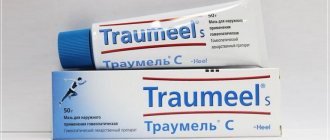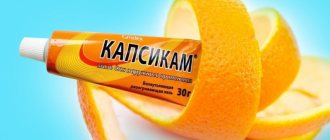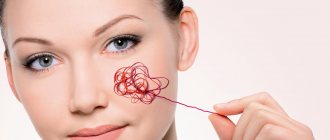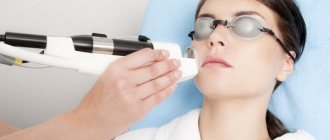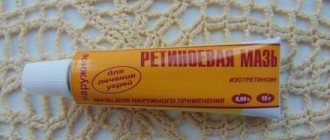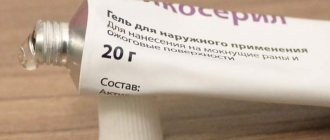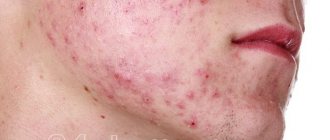Solcoseryl ointment is a stimulating healing drug that helps accelerate tissue renewal. The active ingredient contained in the basis of this medicine is deproteinized (purified from proteins and proteins) calf blood dialysate. It is due to it and its unique properties that Solcoseryl has a biogenic effect.
To obtain dialysate, animals under 3 months of age are selected. The blood of dairy calves is thoroughly cleaned and then subjected to hemodialysis. Thus, the low molecular weight fraction, which is the basis of Solcoseryl, is separated from the high molecular weight (protein) fraction.
The deproteinized dialysate contains some low molecular weight substances.
- Components of cellular elements of calf blood.
- Nucleosides.
- Amino acids.
- Oligopeptides.
- Glycoproteins.
As a result, Solcoseryl is classified as a special medicine with unique properties.
Release form and composition
Currently, several forms of the drug Solcoseryl are produced. Below is a table that clearly shows all forms of release:
| Dosage form | Concentration of the active substance | Additional Ingredients | Description of the drug | Packaging form | |
| Solcoseryl ointment | For 1 gr. | 2.07 mg. | White petrolatum, methyl and propyl parahydroxybenzoate, cetyl alcohol, water, cholesterol. | Fatty whitish-yellow mass | 20 gr. in tubes |
| Jelly | 4.15 mg. | methyl and propyl parahydroxybenzoate, water, carmellose sodium pentahydrate, calcium lactate, | Dense, transparent, colorless | ||
| Solcoseryl gel | 8.3 mg. | Carmellose sodium, water, disodium edetate dihydrate, benzoic acid, benzalkonium chloride, crystallized sorbitol | Fluid yellowish or colorless substance | 5 gr. in a tube | |
| Dental paste | 2.125 mg. | Carboxymethyl cellulose, lauromacrogol, pectin, gelatin, menthol and mint oil. | Granular grounds | ||
| Dragee | 200-400 mg. | none | Pills | 20 pieces per pack | |
| Solution for intravenous infusion | 42.5 mg. per 1 ml. | Water for injections | Transparent yellowish liquid | Ampoules packaged in 2 and 5 ml. | |
Differences
The differences lie in the scope of application. Depending on the type of damaged surface, choose a gel or ointment. The gel does not contain oils or other fatty components, therefore it has a lighter texture. Its base is watery and soft. The gel is easy to apply.
We suggest you familiarize yourself with How to quickly relieve toothache
Treatment of complicated injuries begins with gel. It is indispensable in the treatment of weeping wounds, deep fresh injuries, and wounds with wet discharge.
The gel will help remove exudate (the same liquid that is formed by small vessels) and the formation of young connective tissue.
The main difference between the gel is that it contains a larger amount of active ingredient - 4.15 mg of deproteinized dialysate, while the ointment contains only 2.07 mg.
Ointment is a fatty dosage form, viscous, soft. It is used at the stage of beginning healing, when the wound no longer gets wet:
- When epithelization has already begun at the edges of the wound.
- When the entire wound is covered by epithelialization.
- When the wound was not initially serious (scratches, sunburn, thermal burns of the 1st and 2nd degrees).
In this situation, the ointment will both heal and soften the newly formed layer of epithelium, preventing the appearance of crusts and cracks. The ointment will promote the formation of a film that will protect the healing wound from drying out. If the wound begins to get wet again, return to the gel.
Differences in use are due to differences in composition. Each of these forms has its own auxiliary components.
For the ointment:
- Cetyl alcohol.
- White Vaseline.
- Cholesterol.
- Water.
For the gel:
- Calcium lactate.
- Propylene glycol.
- Sodium carboxymethylcellulose.
- Water.
Indications for use
The use of Solcoseryl helps patients cope with problems caused by metabolic disorders, as well as injuries and wounds.
This drug has the following medicinal effects:
- stimulates the activation of skin renewal processes;
- increases the rate of oxygen absorption into skin cells;
- stabilizes metabolic processes in the body.
Solcoseryl is actively used in gynecology, venereology, ophthalmology, dentistry, and also in cosmetology.
Indications for the use of Solcoseryl ointment are as follows.
- Minor skin injuries (abrasions, scratches or cuts).
- Trophic ulcers.
- Weeping wounds.
- Frostbite.
- Bedsores.
- Solar, thermal and other types of burns.
- Psoriasis.
- Hemorrhoids.
- Seborrheic and atopic dermatitis.
- Wounds formed as a result of unsuccessful or improper removal of moles and papillomas.
- Skin allergy symptoms.
- Chickenpox.
- Dry calluses.
Cheap analogues of Solcoseryl ointment
- Actovegin. An identical substitute intended for the treatment of wounds, ulcers, burns of various etiologies, for the prevention and treatment of radiation injuries of the skin and mucous membranes. Effective for diabetic polyneuropathy.
- Saguenite. Indicated for degenerative skin changes (brittle nails, degeneration of mucous membranes, formation of wrinkles). Prescribed for menopausal syndrome.
- Redecil. According to the description of the drug, it is used externally for ichthyosis, seborrheic dermatitis, eczema, neurodermatitis, and skin atrophy. Gives good results in the treatment of psoriasis and hyperkeratosis.
Natalya : After removing moles, on the advice of my mother-in-law, I used Solcoseryl ointment. The wounds healed very quickly with the drug - after a week they were practically invisible. Now I use the ointment for household injuries (burns, cuts), and my son used it after tattooing. I’m always happy with the result, so I advise everyone to keep this “lifesaver” in their home medicine cabinet.
Eva : I liked the hair mask with Solcoseryl and Dimexide. For facial peeling, I was afraid to apply such a mixture, although it is not hormonal, and not dangerous, but still a medicine. But the effect on the hair is amazing! After the first use, hair loss stopped noticeably, and styling became easier. This “speaks” that the hair structure has become denser. I will continue the course of 10 procedures for 60 minutes every other day.
What is solcoseryl gel used for?
Instructions for use
Depending on the form of the drug, the instructions for use of Solcoseryl indicate the following rules for applying the medicine (orally or topically).
Injections
The medicine is administered intravenously. Before use, the drug is diluted with a five percent solution of dextrose or glucose. It is also permissible to use saline solution for dilution. Intramuscular administration of Solcoseryl is also possible.
Ointment
For various wounds, skin injuries, ulcers and bedsores, as well as in cosmetology, a dosage form of the drug is used as an ointment. It is permissible to smear the affected areas twice a day. Before applying the medicine, the wound must be disinfected with an antiseptic solution. This ointment can be used simultaneously with other medications. The use of Solcoseryl ointment continues until the wounds are completely healed.
Gel form
The gel form of Solcoseryl is intended for weeping wounds and ulcers. The medicine should be applied to a previously cleaned affected surface up to 3 times a day.
Note!!! The ointment can be used to treat dried, crusty wounds. Wet wounds should be treated with the gel form of the drug.
Eye gel
According to the instructions for use, Solcoseryl for the eyes is instilled into the conjunctival sac four times a day. One drop will be enough. This drug is also used as a means of adaptation to lenses.
A slight burning sensation is normal after instillation. In addition, vision clarity may be slightly reduced. All these side effects disappear within half an hour.
Dental paste
Dental adhesive paste, which is also called dental Solcoseryl, is applied directly to the previously dried affected area.
Note!!! Drying the wound is necessary to improve adhesion of the product.
The applied paste is lightly blotted with water. It is useful to carry out the event after meals 3-5 times a day. The duration of the course of treatment is determined by the individual reaction of the body, the characteristics of the disease, and the speed of healing.
Dragee
Dragees can be a good additional treatment when treating with external forms of Solcoseryl. These tablets should be taken three times a day. The duration of taking this medicine is determined by the doctor. Dragees are taken after meals with 1 glass of clean warm water.
Application results
Reviews about the results of using Solcoseryl gel or ointment against acne and the consequences after are different. For some, these drugs are great and improvements are noticeable after just a few procedures, but some note that there are more rashes and inflammation is more intense. Therefore, cosmetologists do not guarantee any effect for everyone, but they warn that it is best to apply a targeted effect on the problem.
Before and after using Solcoseryl for scars
If we talk about smoothing scars and scars after acne, then in this matter there is no equal to the product in question. Within a month, the skin becomes elastic, smoother and of the same shade - imperfections become almost invisible.
We recommend reading the article about electrophoresis with Lidaza for scars. From it you will learn about the action of Lidaza, the method of performing electrophoresis against scars, and the effectiveness of the procedure. And here is more information about Fermenkol gel for scars.
Solcoseryl is a drug that should not be used without prior consultation with a dermatologist or cosmetologist. But a well-designed course of therapy with the remedy in most cases gives positive results - acne and inflammation disappear, scars and cicatrices are visually hidden.
For wrinkles
Solcoseryl ointment is actively used in cosmetology for wrinkles. Before starting anti-aging procedures with the above medicinal product, it is recommended that you familiarize yourself with the following rules:
- First you need to do a skin test. Lubricate the wrist with a small amount of ointment and observe the reaction. If no irritation appears on the skin within 1 hour, then the ointment can be safely used.
- Take a steam bath for your facial skin. This is necessary to open the pores and ensure deeper penetration of the medicine.
- Solcoseryl anti-wrinkle product is applied to the entire surface of the face. The only exceptions are the area around the lips and eyes.
- The rejuvenating event should take place in a calm, relaxing atmosphere, and therefore it is preferable to use Solcoseryl ointment for the face in the evening.
- After using Solcoseryl ointment, moisturizer is applied to the face.
The above medication should not be used continuously. As a basic course of treatment, 8 procedures per month will be sufficient.
Regular use of Solcoseryl helps smooth out deep wrinkles, as well as tighten the contours of the face.
Note!!! For anti-aging activities, it is preferable to use the product in the form of an ointment. The fact is that the gel excessively dries out the skin, and this can cause irritation and peeling.
Traditional medicine recipes for rosacea
As a supplement to the main treatment, you can turn to traditional medicine recipes. They are prepared from natural ingredients, so the risk of side effects is minimized.
Cream based on ascorutin
It is very easy and simple to prepare. To do this, we need regular face cream and one tablet of ascorutin. First, grind the tablet into powder and add it to your day face cream. It should be applied just like a regular face cream.
Potato mask
To make it we need one raw potato. Peel the vegetable, grate it on a fine grater or grind it in a meat grinder. Distribute the resulting mass onto your face and cover with gauze. Let it stand for 15 - 20 minutes, then wash off the composition from the face with chamomile decoction.
Read: Using Ketotifen will help get rid of allergies
Oatmeal mask
To prepare the mixture we need oatmeal, a little chamomile and olive oil. Chamomile should be ground to flour, take 1 tbsp. l. and mix with 1 tbsp. l. oatmeal, then add olive oil and mix all ingredients thoroughly. Apply the resulting composition to your face for half an hour. Next, wash it off with warm water. This product can be used daily until the redness is completely eliminated.
Berry mask
To make the medicine we need potato starch, apple, strawberry, raspberry, sea buckthorn and lingonberry. Take 1 tsp of all the berries, then add 1 tsp. starch and mix well. Next, peel the apple, chop it and add it to the rest of the ingredients. It is advisable to wash your face before applying. Keep this mixture for at least half an hour, and then rinse your face with warm water.
Herbal mask
To prepare this medicine you will need:
- pharmaceutical camomile
- Calendula
- Linden
- Oat powder
All components should be taken in equal proportions, mixed thoroughly, then add olive oil. Apply the composition to the facial skin for 20 minutes. After time, wash off the mask with a decoction of calendula.
In addition to all the above remedies, there are other masks based on apple cider vinegar, honey, etc. But before using them, you should consult a specialist, as they can harm the skin.
For wounds, cracks and ulcers
Solcoseryl ointment is actively used to treat any poorly healing wounds. After preliminary disinfection of the affected area, the ointment is applied directly to the wound. The main course of treatment can be supplemented with antibiotics, analgesics and anti-inflammatory drugs. If there is exudation of a purulent nature, the wound is first subjected to mechanical cleaning.
Solcoseryl ointment is also especially popular among nursing mothers, as it perfectly heals cracked nipples.
For burns
Solcoseryl is prescribed quite often for burns. Various forms of the above medication allow its use for varying degrees of damage to the skin and tissues.
Solcoseryl for burns is initially used in gel form. The gel does not contain fats and oils, and therefore a sufficient amount of oxygen will penetrate the skin. The gel will help restore damaged areas and eliminate the consequences of burns.
After healing the wound, use ointment. The fatty components in the ointment are necessary for the formation of a protective layer on the affected cells.
Which is better to choose from the two forms of the drug?
The question of which is better between the two forms of remedy can in reality lead to a dead end.
Both forms of the drug have pros and cons. The ointment is high in fat, so it can clog pores, which is undesirable for skin prone to excessive oiliness. And the gel contains propylene glycol, which is not useful. But at the same time, the ointment is more useful for thin skin prone to dryness, and the gel easily seeps into the thickness of the epidermis.
In addition, the effectiveness increases significantly when used in combination with other drugs. It should be remembered that ointment and gel are not exactly the same thing, so you should choose auxiliary products with caution. In addition, alternating application of gel and ointment is allowed.
In the treatment of hemorrhoids
Since hemodialysate from the blood of young calves is able to stimulate the healing process, as well as the processes of supplying the affected areas with blood, Solcoseryl ointment has proven itself well in the treatment of hemorrhoids and anal fissures.
The ointment is applied up to five times a day.
For deep anal fissures, before applying the gel, it is necessary to cleanse the intestines with an enema.
Note!!! Cleansing the intestines is not always given special importance. And completely in vain. After all, feces contain a considerable amount of putrefactive bacteria, which significantly inhibit the healing of cracks.
Mask for the face
A rejuvenating mask with Solcoseryl and Dimexide smooths out wrinkles and helps against acne. Dimexide allows Solcoseryl to be absorbed faster. In addition, it also serves as an excellent antiseptic.
First, Dimexide is diluted in a glass container in the following proportions: 1 part Dimexide and 10 parts boiled water. After which the face is treated with a washing disk. After the product is completely absorbed, Solcoseryl ointment is applied to the face. The mask lasts for 15 minutes, then it is simply washed off with warm water.
Solcoseryl ointment can be used as a night cream. Before applying the ointment, the facial skin is steamed. By morning, the skin will be refreshed and look rested.
Note!!! The above medication has a specific meaty smell. It can be interrupted by adding a couple of drops of lemon or rosemary essential oil to the mixture.
Useful video
Watch the video about whether Solcoseryl will help against wrinkles:
Similar articles
- Cream for rosacea: how to choose for treating skin with...
Choosing a cream for rosacea, finding the best remedy for treating rashes on the facial skin, as well as for rosacea, is not at all easy. It is better to consult a doctor so as not to make things worse. He will also suggest ointments and creams that can be used to moisturize. Read more - Acne scars: how to remove scars, which peeling is better...
Acne scars, like scars, appear due to improper removal. There are several ways to remove scars: peeling, laser removal. Sometimes even surgical treatment of atrophic scars is required. Read more
- Autohemotherapy for acne: application scheme...
The unusual procedure of autohemotherapy for acne really works. The bottom line is that a person is injected with his own blood with an antibiotic. The scheme of application on the face is not so simple, especially for doing it at home. Read more
- Fermenkol gel: composition of a cosmetic product from…
Fermenkol gel is used for scars and stretch marks. The composition of the cosmetic effectively combats visual skin problems. Which is better - Fermenkol Elastin complex or Contractubex? What other analogues are there? Read more
Contraindications and side effects
Solcoseryl is contraindicated during pregnancy. This drug should be used with extreme caution in case of respiratory diseases (for example, pulmonary edema), chronic renal and heart failure, hyperkalemia, anuria and oliguria, as well as while taking other potassium-containing drugs.
Side effects when using Solcoseryl are extremely rare.
However, ointment on the skin can cause hives, dermatitis and even anaphylactic shock.
When using dental paste, patients may lose taste for a short time.
When using the solution, skin redness and swelling at the injection site are very rarely observed.
Which is better: Solcoseryl gel or ointment
| Dosage form of Solcoseryl | Ointment | Gel |
| Dialysate concentration (%) | 5 | 10 |
| When to use | After the wound has dried | After skin and tissue damage |
| How many times a day is it allowed to use | 1-2 | 2-3 |
| Is it acceptable to cover with a bandage? | Allowed | Not allowed |
What does this table tell us?
The gel form of the drug can be used on an already cleaned and disinfected wound or trophic ulcer. The double concentration of dialysate will help the drug to be better absorbed under the skin and form new tissue.
Only after granulation tissue has formed is the use of ointment allowed. A 5% dialysate content here will already be sufficient, and the fat layer will prevent excessive drying of the wound and the formation of a high scar. If necessary, a bandage can be applied on top.
Solcoseryl ® (Solcoseryl ® )
Content
Pharmacological groups
Nosological classification (ICD-10)
3D images
Composition and release form
| Injection | 1 ml |
| deproteinized dialysate from the blood of healthy dairy calves, standardized chemically and biologically (in terms of dry matter) | 42.5 mg |
| excipients: water for injection - up to 1 ml |
in ampoules of 2 ml; there are 25 ampoules in a box; or in ampoules of 5 and 10 ml; There are 5 ampoules in a box.
| Gel | 1 g |
| deproteinized dialysate from the blood of healthy dairy calves, standardized chemically and biologically (in terms of dry matter) | 4.15 mg |
| preservatives: methyl parahydroxybenzoate (E218) and propyl parahydroxybenzoate (E216) | |
| excipients: calcium lactate; sodium carboxymethylcellulose; propylene glycol; water for injections |
in tubes of 20 g; 1 tube in a box.
| Ointment | 1 g |
| deproteinized dialysate from the blood of healthy dairy calves, standardized chemically and biologically (in terms of dry matter) | 2.07 mg |
| preservatives: methyl parahydroxybenzoate (E218) and propyl parahydroxybenzoate (E216) | |
| excipients: cetyl alcohol; cholesterol; white Vaseline; water for injections |
in tubes of 20 g; 1 tube in a box.
Description of the dosage form
Solcoseryl gel:
homogeneous, almost colorless transparent gel of dense consistency.
Solcoseryl ointment:
homogeneous, fatty, easily distributed mass from white to yellowish.
pharmachologic effect
The drug Solcoseryl is a deproteinized hemodialysate containing a wide range of low-molecular components of cell mass and blood serum of dairy calves with a molecular weight of 5000 D, the properties of which are currently only partially studied by chemical and pharmacological methods.
In in vitro
, as well as in the course of preclinical and clinical studies, it was found that Solcoseryl:
– increases reparative and regenerative processes;
– promotes activation of aerobic metabolic processes and oxidative phosphorylation;
– increases oxygen consumption in vitro
and stimulates the transport of glucose into cells under hypoxic conditions and into metabolically depleted cells;
– increases collagen synthesis ( in vitro
);
– stimulates cell proliferation and migration ( in vitro
).
Solcoseryl gel does not contain fats as auxiliary components, making it easy to wash off. Promotes the formation of granulation tissue and the elimination of exudate.
From the moment fresh granulations appear and the wound dries, it is recommended to use Solcoseryl ointment, which contains fats as auxiliary components and forms a protective film on the wound surface.
Pharmacokinetics
Conducting studies on the absorption, distribution and excretion of the drug using standard pharmacokinetic methods is not possible, because the active component of the drug (deproteinized hemodialysate) has pharmacodynamic effects characteristic of molecules with different physicochemical properties.
Indications of the drug Solcoseryl ®
Solcoseryl solution for injection.
Occlusive diseases of peripheral arteries in stages III–IV according to Fontaine in patients with contraindications/intolerance to other medications;
chronic venous insufficiency accompanied by trophic disorders ( Ulcera cruris
), in cases of their persistent course;
disorders of cerebral metabolism and blood circulation (ischemic and hemorrhagic stroke, traumatic brain injury).
Solcoseryl gel, ointment.
Minor damage (abrasions, scratches, cuts).
1st and 2nd degree burns (sunburn, thermal burns).
Difficult-to-heal wounds (including trophic ulcers and bedsores).
Contraindications
Solcoseryl solution for injection.
Established hypersensitivity to calf blood dialysates;
since Solcoseryl injection contains derivatives of parahydroxybenzoic acid (E216 and E218), used as preservatives, as well as trace amounts of free benzoic acid (E210), the drug should not be used if there is an allergic reaction to the listed components;
There are no data on the safety of Solcoseryl injection in children, so the drug should not be prescribed to children under 18 years of age;
Solcoseryl injections should not be mixed when administered with other drugs, with the exception of isotonic sodium chloride solution and 5% glucose solution.
Solcoseryl gel, ointment.
Hypersensitivity to one of the components of the drug.
Carefully
- with a predisposition to allergic reactions.
Use during pregnancy and breastfeeding
Despite the lack of data on the teratogenic effect of Solcoseryl, the drug should be used with caution during pregnancy. There are no data on the safety of using Solcoseryl injection during lactation. If it is necessary to use the drug, it is recommended to stop breastfeeding.
Side effects
Solcoseryl solution for injection.
In rare cases, allergic reactions may develop (urticaria, hyperemia and swelling at the injection site, increased body temperature). In this case, it is necessary to stop using the drug and prescribe symptomatic treatment.
Solcoseryl gel, ointment.
In rare cases, allergic reactions in the form of urticaria and marginal dermatitis may develop at the site of application of Solcoseryl. In this case, you must stop using the drug and consult a doctor.
A short-term burning sensation may be observed at the site of application of Solcoseryl gel. If the burning sensation does not go away for a long time, the use of Solcoseryl gel should be abandoned.
Interaction
Solcoseryl injections should not be mixed when administered with other medications, especially with phytoextracts.
The pharmaceutical incompatibility of Solcoseryl in the form of an injection solution with parenteral forms has been established:
Ginkgo biloba extract
,
As solutions for diluting Solcoseryl injection, only isotonic sodium chloride solution and 5% glucose solution should be used.
The interaction of Solcoseryl with other topical medications has not been established.
Directions for use and doses
Solcoseryl injection solution:
IV
or
IM
.
In the treatment of occlusive diseases of peripheral arteries in stages III–IV according to Fontaine
- IV 20 ml daily. Intravenous drip administration in isotonic sodium chloride solution or 5% glucose solution is possible. The duration of therapy is up to 4 weeks and is determined by the clinical picture of the disease.
In the treatment of chronic venous insufficiency accompanied by trophic disorders (Ulcera cruris)
- IV 10 ml 3 times a week. The duration of therapy is no more than 4 weeks and is determined by the clinical picture of the disease. An important additional measure aimed at preventing peripheral “venous” edema is the application of a pressure bandage using an elastic bandage.
In the presence of local trophic tissue disorders, simultaneous therapy with Solcoseryl jelly and then Solcoseryl ointment is recommended.
In the treatment of ischemic and hemorrhagic strokes in severe and extremely severe forms
as the main course - 10 or 20 ml intravenously, respectively, daily for 10 days. Upon completion of the main course - 2 ml intramuscularly or intravenously for 30 days.
Traumatic brain injury (severe brain contusion)
- IV 1000 mg, daily for 5 days.
If intravenous administration of the drug is not possible, the drug can be administered intramuscularly, usually 2 ml per day undiluted.
When using the undiluted drug intravenously, it must be administered slowly, since it is a hypertonic solution.
Solcoseryl gel, ointment:
topically.
Apply directly to the wound surface after preliminary cleansing of the wound using a disinfectant solution.
Before starting treatment of trophic ulcers, as well as in cases of purulent infection of the wound, preliminary surgical treatment is necessary.
Solcoseryl gel is applied to fresh wounds, wounds with wet discharge, and to ulcers with signs of weeping - a thin layer on a cleaned wound 2-3 times a day. It is recommended to lubricate areas where epithelization has begun with Solcoseryl ointment. The use of Solcoseryl gel continues until pronounced granulation tissue forms on the damaged skin surface and the wound dries out.
Solcoseryl ointment is used primarily for the treatment of dry (non-wetting) wounds.
Solcoseryl ointment is applied in a thin layer to a cleaned wound 1-2 times a day; it can be used under bandages. The course of treatment with Solcoseryl ointment continues until the wound is completely healed, its epithelization and the formation of elastic scar tissue.
For the treatment of severe trophic damage to the skin and soft tissues, the simultaneous use of parenteral forms of Solcoseryl is recommended.
Overdose
There is no information on the effects of an overdose of Solcoseryl (injection solution, gel, ointment).
special instructions
Solcoseryl (gel, ointment) should not be applied to a contaminated wound, since it does not contain antimicrobial components.
The use of Solcoseryl, like all other medications, is undesirable during pregnancy and breastfeeding and is possible only when absolutely necessary and under the supervision of a doctor.
If you experience pain, redness of the skin near the site where Solcoseryl was applied, secretion from the wound, or increased body temperature, you should immediately consult a doctor.
If, when using Solcoseryl, healing of the affected area is not observed within 2-3 weeks, you should consult a doctor.
Storage conditions for the drug Solcoseryl ®
Keep out of the reach of children.
Shelf life of the drug Solcoseryl ®
Do not use after the expiration date stated on the package.
Analogs
Among the many drugs that have similar properties to Solcoseryl, the most popular are Levomekol and Actovegin.
The table below shows the estimated prices for the drug, as well as analogues of its various dosage forms.
| Dosage form of Solcoseryl | Approximate price for Solcoseryl (RUB) | Analogues of the drug | |
| Ointment | 330-350 | Levomekol, Actovegin, Evista, Redecil, Approl, Algofin, Stizamet, Sagenite | |
| Jelly | 180-230 | Actovegin | |
| Eye gel | 280-300 | Taufon, Glekomen, Actovegin, Hypheneslez, Etaden, Taurine, Korneregel | |
| Dental paste | 310-340 | ||
| Solution | 5 ml. | 505-560 | Actovegin |
| 2 ml. | 1220-1300 | ||
| Dragee | 185-200 | ||

